Tools to help you

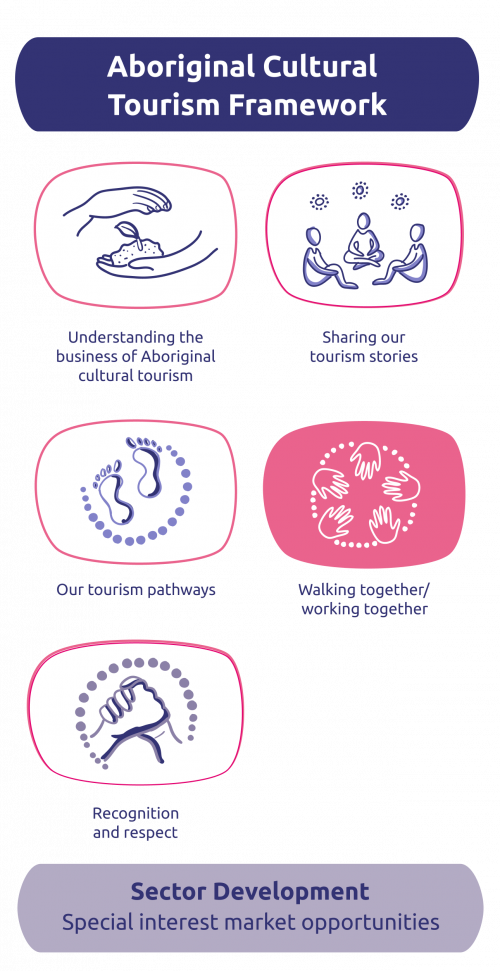
What are cultural protocols?
Protocols create a good way of us walking together and working together
Cultural protocols are appropriate ways of behaving, communicating and showing respect to a particular cultural group.
Protocols may be different for every region, community, family and individual. They consider the values, traditions, laws and lore of Aboriginal people to ensure that culture remains strong and protected.
Protocols provide a way for working with people from different cultures and when followed they show respect for our cultural values and beliefs.
+ Terri Janke. Writing Cultures: Protocols for Producing Indigenous Australian Writing. (2012)
Ways we can walk together/work together
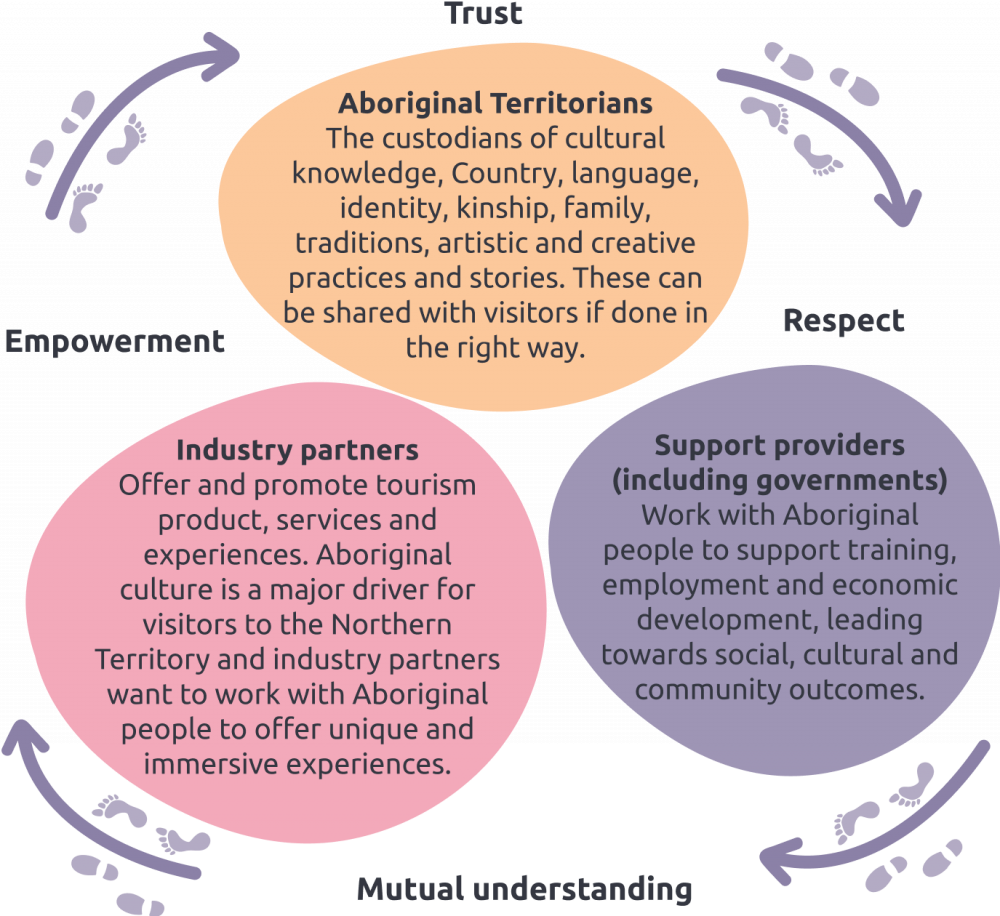
Founded on the Larrakia Declaration on the development of Indigenous tourism.
Why do we need protocols?
Protocols can be developed for a range of reason:
Obtaining permission to visit Country and the places that are allowed to be visited (some places might only be appropriate to visit with an authorised Aboriginal person).
Acknowledging and respecting people and places including gender, kinship, Elders, ancestors, Welcome to Country (including fee for service), acknowledgement of Country, ceremonies, cultural competency and cultural safety (including sensitive images, information and other materials).
Respecting and not disturbing cultural and natural sites and not leaving rubbish behind.
Cultural interpretation, knowledge and stories only to be shared by appropriate Traditional Owners or accredited tour guides.
Understanding the meaning of Indigenous cultural intellectual property, copyright, moral rights, the United Nations Rights of Indigenous Peoples and other legal protection and requirements.
Protocols for community engagement, consultation, communication and visiting communities.
Ensuring safety of visitors at all times.
Respecting cultural business which may result in temporary site, community and business closures.
Undertaking activities that provide benefits for Aboriginal communities, Country and culture.
* Adapted from Categories of ICIP Diagram, c Terri Janke and Company, Produced under licence with Terri Janke and Company
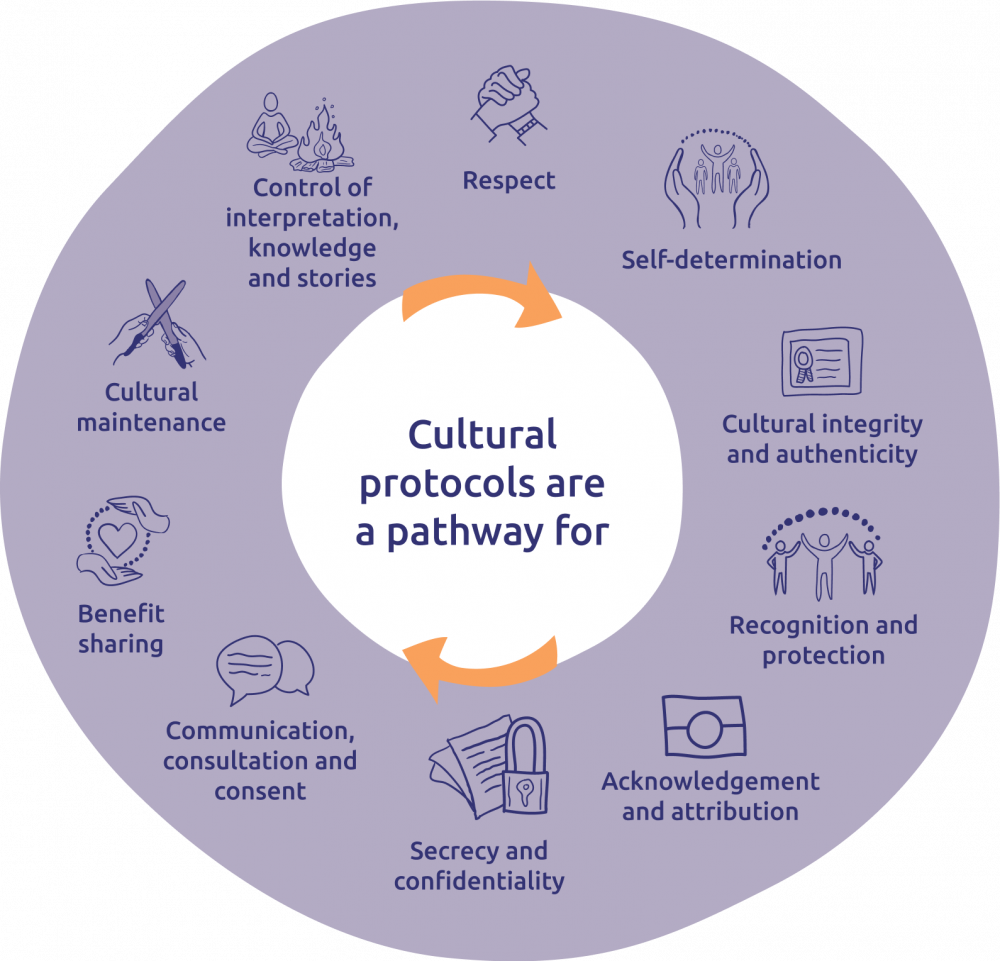
What is Indigenous Cultural and Intellectual Property (ICIP)?
ICIP refers to the rights that Aboriginal people have to protect their tangible (things that we can touch and move) and intangible (practices, beliefs, stories, performance) cultural heritage.
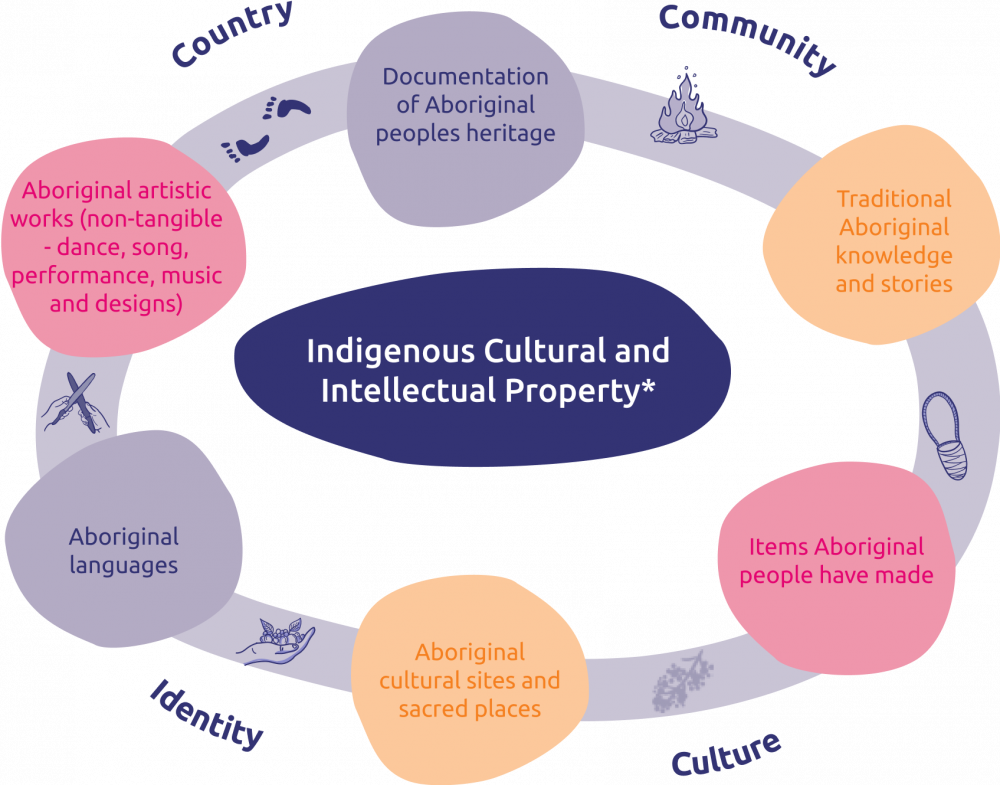
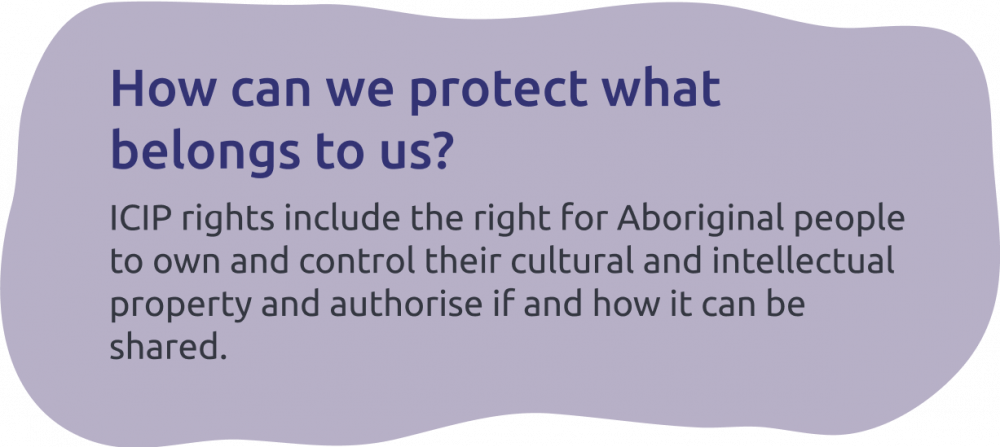
* Adapted from Categories of Indigenous Cultural and Intellectual Property produced by Terri Janke and Company, 2020.
Where can I learn more about cultural protocols?
There are many resources, checklists and advice to help guide the development of cultural protocols.
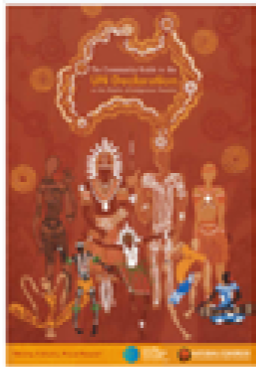
United Nations Declaration on the Rights of Indigenous People (2007)
A universal framework of minimum standards for the survival, dignity and well-being of the Indigenous peoples of the world elaborating on existing human rights standards and fundamental freedoms as they apply to Indigenous peoples. The Australian Government also subscribes to this Declaration.
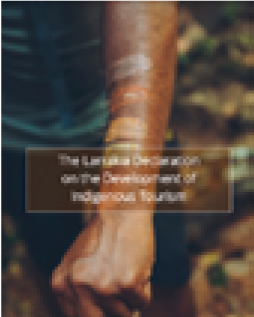
The Larrakia Declaration on the Development of Indigenous Tourism (2012)
Building on the United Nation’s Declaration, the Larrakia Declaration has been adopted by the United Nations World Tourism Organisation (UNWTO) as the global best practice principles for working with Indigenous peoples in Indigenous tourism. The principles include - Respect, Consult, Empower, Partner, Benefit and Protect.
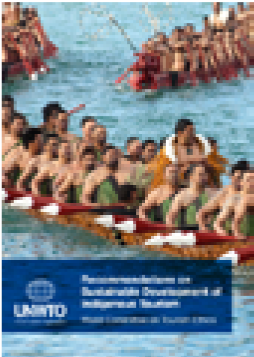
Recommendations on the Sustainable Development of Indigenous Tourism, UNWTO (2019)
These recommendations are for Indigenous peoples, tourism operators, travel agents, tour guides, government agencies, support services and other stakeholders, providing guidance on appropriate ways of working together in accordance with the Larrakia Declaration principles.
Examples of cultural protocols developed by Aboriginal Territorians:
Who can provide advice and support?
Cultural protocols will help you, your family and your community:
- Set the rules for what can and can’t be shared
- Determine how visitors must behave when sharing culture and Country
- Control how you’d like to work together with the tourism industry, government and other partners.
Advice and support with ICIP and cultural protocols can be sought in consultation with:
- Elders, Traditional Owners and relevant custodians
- Representative land councils, native title bodies and prescribed body corporates
- The Australian Institute of Aboriginal and Torres Strait Islander Studies (AIATSIS)
- The Indigenous Art Code and representative regional Indigenous art organisations
- Legal advice from the Arts Law Centre, the Copyright Council of Australia, a legal practitioner, the North Australian Aboriginal Justice Agency (NAAJA) or the Central Australian Aboriginal Legal Aid Services (CAALAS), Community Legal Centres Australia
- IP Australia administer intellectual property rights for trademarks, patents, designs and plant breeder’s rights.
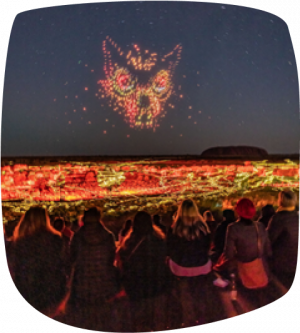
An example of ICIP in practise
Once you have decided on your own cultural protocols you can work towards receiving recognition of your Aboriginal cultural tourism product or experience. Learn about the different recognition and right way pathways to becoming a respected Aboriginal cultural tourism business in our next booklet ‘Recognition and respect.’
Above: Senior Anangu Traditional Owners worked together with Voyages Indigenous Tourism Australia to develop the Wintjiri Wiru drone and light show experience. An Indigenous Cultural Intellectual Property Agreement was established to ensure protection, respect, remuneration and recognition for Anangu in the long term.
What others are saying
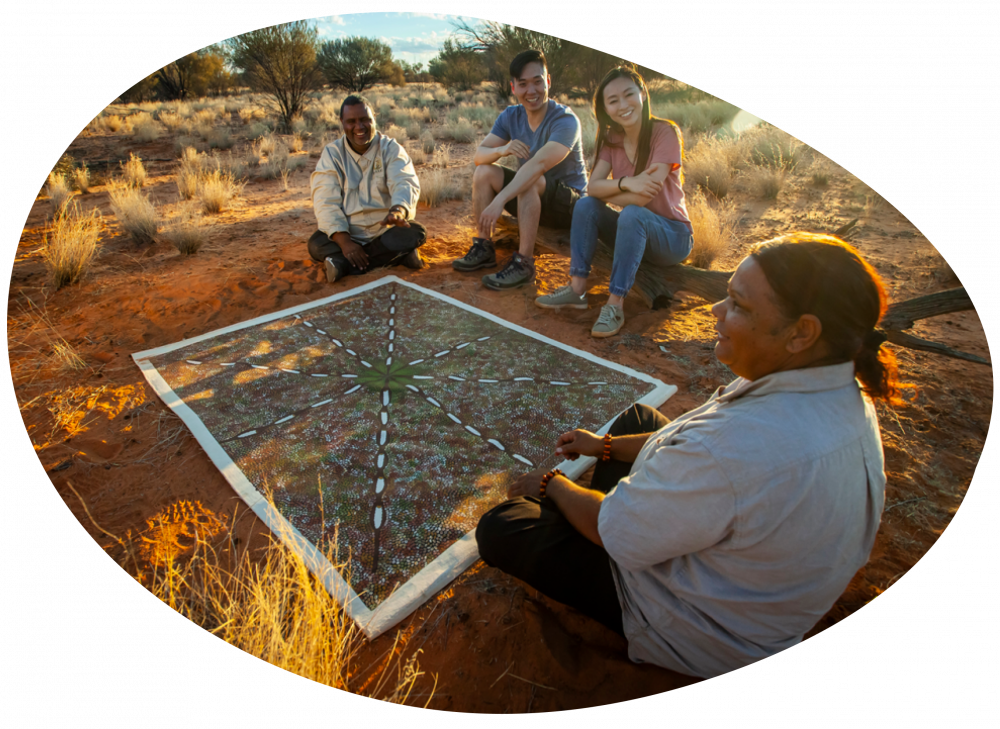
As anybody starting their own business they have to look at where they actually are. There’s the important power within their own local area – that spirit of the land, that power there is just unique and the local person that’s in that area wanting to do their own business, they’ll know whether it’s right, they have the feeling because it’s their own land.
Peter Abbott
Karrke Aboriginal Culture Tour
